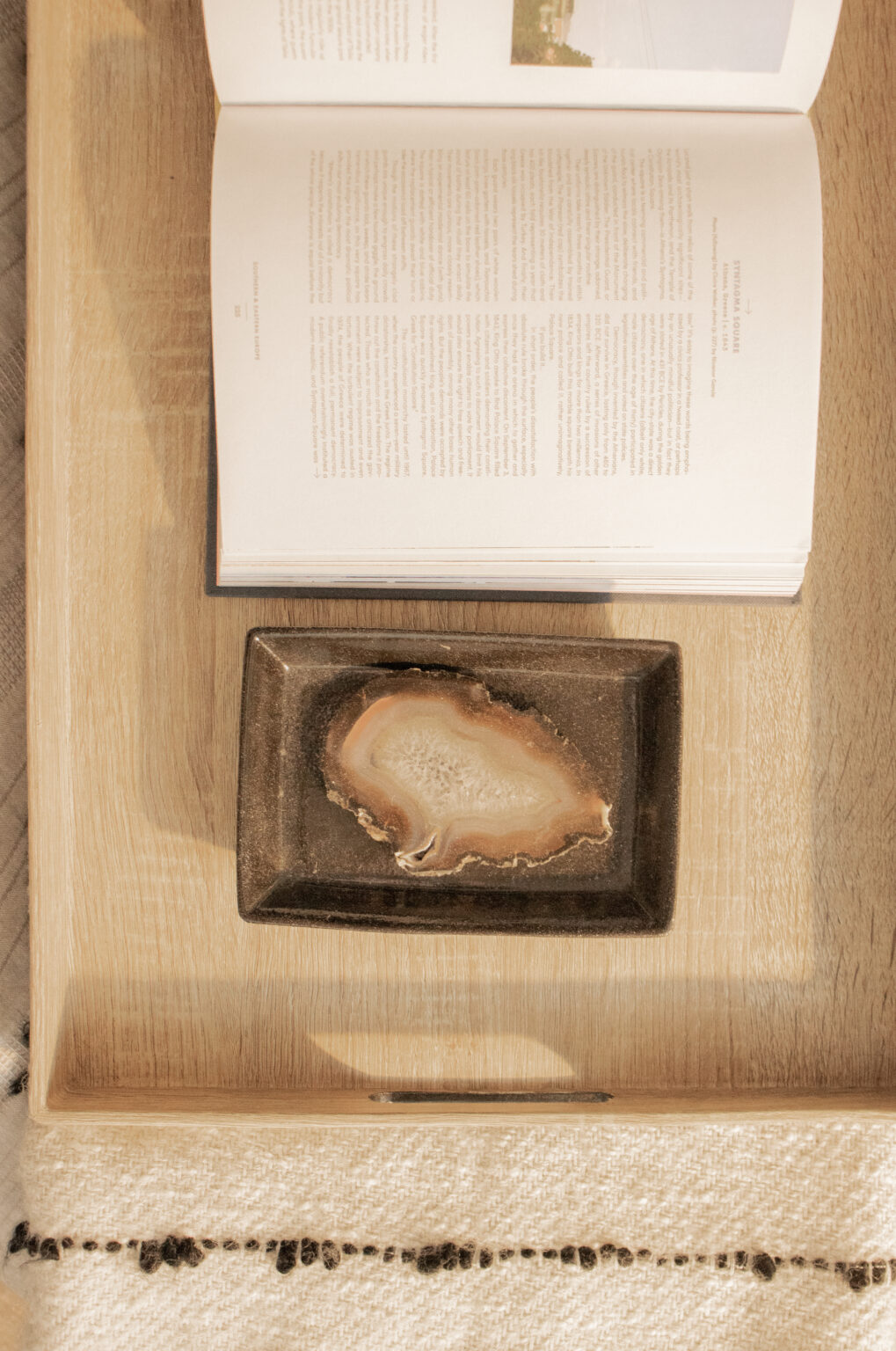Why is your bio important?
Your bio conveys who you are, what you do, and why people should care, all in a few sentences or paragraphs.
Whether someone’s just found you on their favorite podcast, in a publication they read, or browsing social media, your bio is often the first real introduction they get to you and your brand. It sets the tone for how they perceive you and hopefully leaves them thinking, “I need to hear more from this person.”
A strong bio not only builds trust and credibility by showcasing your expertise, but it should also differentiate you by emphasizing your unique contributions and values.
Where to Use Your Bio
Your bio is really a “write it once, use it everywhere” type of asset! Plan to use your bio for your:
Website & Blog Posts: Your bio should be front-and-center on your website. Include the full-length version on your “About Me” page and the abbreviated version underneath your blog posts.
Social Media Profiles: Use the abbreviated version of your bio for your Instagram, TikTok, X, and Facebook profiles and the full-length version for your LinkedIn profile.
Guest Posts & Features: Whenever you write for a magazine, blog, or media outlet, an editor will ask for your bio. The abbreviated version will appear under the post, and they may ask for the full-length version for your author archive page.
Speaking Engagements: When you get booked for a conference, webinar, or podcast, your bio may be used in promotional materials, schedules/itineraries, and show notes.
Email Signature: Optionally, adding your mini bio to your email signature can help recipients learn more about you and other places where they can connect with you.
That’s right, you’ll often need your bio in different lengths. Follow my advice below on how to write a bio once and trim it down into three versatile versions so all your bases are covered!
How to Write a Bio
Your bio needs to make people care about what you have to say, which is a tall order when you’re reaching total strangers. Here’s the process I use to help my clients craft a functional and interesting bio that they can use anywhere.
#1 Think About What's Relevant
The things your bio should emphasize may not roll right off your tongue, especially if you don’t spend a lot of time pitching yourself. This exercise will get you thinking about what you should prioritize.
Who are you? — Think beyond your name. List your official titles, degree, and any companies/books/projects you want to be associated with. Also consider charity work and committee positions.
What do you want to be known for? — You’ll have to get choosey for the shortest versions of your bio, so order the above list based on what’s most important and relevant to your brand image.
Why should people care? — This is where social proof comes in handy: Nominations, awards, projects, and influential recommendations. Also consider outlets, events, and conferences where you’ve been featured. If you have none of that, lean into your education or work experience.
#2 Write Your Power Sentence
Your bio will often be cut down to its first (and sometimes second) sentence. Use these initial words to present the most impactful and relevant info about yourself.
Consider these examples:
- Reese Witherspoon is an award-winning actress, producer, New York Times best-selling author and founder.
- Dolly Parton is a singer, songwriter, actress, producer, businesswoman, and philanthropist.
- Arianna Huffington is the founder and CEO of Thrive Global, the founder of The Huffington Post, and the author of 15 books, including “Thrive” and “The Sleep Revolution.”
Notice that none of these start with personal facts like: “Reese Witherspoon is an actress living with her four puppies in Los Angeles,” or “Dolly Parton is a singer-songwriter from Tennessee who loves pastels, red wine, and butterflies.”
Here’s my unpopular opinion: Forcing personality into your bio is unprofessional and unnecessary. I love iced coffee too, but do you really want to use these precious words to mention that? Once you define and embrace a true-to-you brand image, your personality will flow through naturally.
Look back at the priority list you made in step one and mention up to six things. It doesn’t need to be clever, just concise.
#2 Introduce Your Value-Driven Work
Starting with your power sentence, write a whole paragraph that explains your current position or latest milestone (publishing a book, founding a company, etc.). Whatever you emphasize here should provide valuable insight into your interests, strengths, and values.
For example:
- In 2016, [Reese] established the media brand Hello Sunshine, which puts women at the center of every story across all platforms – from scripted and unscripted television, feature films, animated series, podcasts, audio storytelling, and digital series.
- In 2016, [Arianna] launched Thrive Global, a behavior change technology company with the mission of improving health outcomes and productivity.
See how Reese’s example subtly pulls in a core value — putting a spotlight on women — while giving valuable background info? Find a similar way to explain your work by leaning into your company’s mission statement or your personal brand statement.
#3 Expand to Secondary Information
The extra paragraphs of your bio may not be used everywhere, but they’re handy to have around (more on that in a minute). Use these words to cover any additional information, like:
- Other achievements and projects. For instance, Reese expands her bio to talk about Reese’s Book Club and how it empowers up-and-coming authors.
- Philanthropic and passion work that reinforces your core values. Think professional memberships, boards, committees, initiatives, and organizations you support.
- Relevant interests and roles that truly align with your expertise. Chris Morris, tech writer, adds to his bio: “Chris is also a frequent panel moderator and speaker at major conferences, including CES and South by Southwest.”
This is also the place to include personal details, if you feel compelled to do so. Check out this example from Stephanie Vozza:
“When she’s not writing, Stephanie is working on her next wow moment. So far, she’s taken an Improv class with Second City, gotten an otter tattoo with her sons and daughter in law, learned how to twirl a baton from an Auburn University majorette, and was an extra in ESPN’s College GameDay promo (good luck finding her!) She blogs about her adventures at wow-moments.com.”
Why does it work? Having penned nearly 1,000 articles for Fast Company’s Work Life vertical, these details showcase some of the experiences she’s chronicled and serve to promote her personal blog.
#4 Sum Up Your Expertise
To wrap up your bio, sum up any social proof: Awards, nominations, flagship projects, and features in influential conferences, podcasts, and media outlets. This info validates you as a trusted voice in your industry.
If you’re newer or lack formal recognition, emphasize education, credentials, and years of experience instead. Check out these examples:
“Douglas was funded by the National Science Foundation to travel to Antarctica from November 2019 to January 2020.” — Freelance journalist reporting on climate change
“Derek is particularly knowledgeable in full-cycle sales, eCommerce, SaaS, and B2B marketing, having consulted in those areas for over 5 years. He is HubSpot Content Marketing certified.” — Marketer writing on lead generation
“Chris is a veteran journalist with more than 35 years of experience, more than half of which were spent with some of the Internet’s biggest sites, including CNNMoney.com and Yahoo! Finance.” — Fast Company contributor
See? Even without nominations or awards, you can come up with an impactful sentence that reinforces why you’re a trusted source in your industry. So, don’t skip this part!
#5 Edit Your Bio Into Three Versions
Now that you’ve written your bio, it’s time to trim it down so you have three ready-to-use versions:
A “mini bio” (sometimes just called a “byline”) is one sentence or two short sentences. This can simply be your power sentence, but you might add a little extra info for clarity’s sake — like turning “founder” into “Founder of XYZ.”
A short bio is just one paragraph (about four to five sentences) and it’s typically your power sentence, a short summary of your value-driven work, and a brief recap of your best social proof.
A full-length bio is everything you’ve just written (typically 2-3 paragraphs) and gives hosts and collaborators more to pull from when talking about or introducing you — even if they don’t publish your bio in full. This extended version may be shared in show notes; author archives; on your LinkedIn profile; and on your “About Me” page.
Having all three versions of your bio polished and ready to go ensures you’re prepared for any opportunity, saving you time and helping you make a positive, consistent first impression.
Need a place to keep your bios? Make a media kit!
Tips & Best Practices
Here’s some advice to get the most out of every “first impression” opportunity that involves your bio.
Tailor Your Bio As Needed
While your bio shouldn’t need constant tweaks, there are moments when a little tailoring can go a long way, like when you’re being featured in a prestigious outlet or becoming a contributor for a new platform.
In these cases, you might edit your bio to better align with the outlet’s tone or what you’ll be speaking on. Think of it as dressing your reputation for the occasion — same you, new outfit.
Default to Third-Person Perspective
Writing your bio in third person is the standard for a reason. Not only does it come across as more polished and professional, but it makes it easier for editors, hosts, and collaborators to use your bio without changes.
That said, for your personal website, social media profiles, or any other channels you manage directly, feel free to rework your bio into first person for a warmer, more approachable tone.
Leave Out What You Don't Like
In case it’s not apparent, you’re not obligated to include details in your bio that don’t align with how you want to be perceived.
For instance, if you’re building a brand for yourself as an artist, you don’t need to call attention to your 9-5 administrative work. Nor do you need to mention that you made a mid-life career shift from nurse to marketer, unless you want to make that a big part of your brand.
Use your bio to showcase the aspects of your work and life that represent what you want to be known for now. You can always make space elsewhere (like on your website) to talk about the life events that have shaped your journey.
Seek Out Credentials (If You Need Them)
If you feel your social proof is coming up short, earning new credentials is a fast and accessible way to boost your bio.
Look for free and affordable certifications that align with your field. For instance, for writers and thought leaders, recognitions like a “LinkedIn Top Voice” badge can be worth earning.
- Credentials & Badges for Thought Leaders
Include Relevant Links
Embed links to anything important and relevant you mention (books, projects, articles, podcast episodes) and especially to your website, blog, and social media profiles within your bio.
Not every outlet will permit links in your bio, but it’s good to include them by default. Editors will remove them if needed.
Add a Call-to-Action
End your bio with a clear, actionable statement or “call-to-action.” For instance, you could direct readers to sign up for your newsletter, download a lead magnet, or follow you on a specific platform.
Your call-to-action may be removed based on editorial guidelines or context, but it’s best to have one already written and available for instances where it’s appropriate.
- How to Write a Great Call-to-Action
Perfect Your Byline
Here’s a tip I shared in my How to Build a Media Kit article: Even if you think it’s obvious, spell out exactly how you should be addressed in professional settings by writing out your byline.
Your byline should include your:
- Name — Exactly as you want it to appear, including any middle initials, hyphenations, suffixes, and honorifics like Miss, Mrs., Mr., Mx., or Dr.
- Title — Your primary identifier, such as “Founder & CEO,” “Musician and Author,” or “Senior Contributor.”
If you’re sending your bio directly to someone (like a host or editor) so they can publish it on your behalf, it’s a good idea to specify your pronouns as well so they can properly introduce and credit you.
Pair Up A Professional Headshot
A professional photo of yourself communicates that you’re polished, approachable, and serious about how people perceive your brand.
You can use your smartphone to take a well-lit portrait or you can dig up some high-quality photos that maybe you’ve long overlooked (perhaps because they have other people in them). Almost any photo can work great thanks to modern editing tools.
Using a platform like Canva, you can remove visual clutter, add a colored/patterned background, and edit people, pets, and objects out of your picture.
- How to Edit a Headshot Using Canva
Examples of Powerful Bios
I scoured the internet to find a few examples that I hope inspire you to really take your time on this little project and write a bio you’ll be proud to share for years to come.
David Grant, Brain Injury Advocate
David A. Grant, an internationally published author, keynote speaker, magazine publisher, and advocate for brain injury awareness, resides in southern New Hampshire. After surviving a traumatic brain injury (TBI) from a cycling accident in 2010, David leverages his personal journey to inspire and educate the brain injury community.
In 2011, David founded the Brain Injury Hope Network (BIHN), a 501(c)(3) non-profit organization. The mission of BIHN is to provide support, resources, and a community for individuals affected by traumatic brain injuries. BIHN aims to empower individuals to share their stories, find hope, and navigate the recovery process with empowerment and solidarity. Today, the BIHN community has grown to over 50,000 members, offering a vital platform for connection and support.
Beyond his work with BIHN, David is a regular contributor to “Chicken Soup for the Soul” and writes as a staff blogger for Brainline.org. His 2012 book, “Metamorphosis: Surviving Brain Injury,” chronicles his own journey through recovery. He has also authored several other books that provide support and guidance for individuals living with brain injuries. David’s multifaceted efforts continue to make a significant impact on the brain injury community.
Why I love it — David’s bio starts out with a personal detail, but it’s deeply relevant to his work and motivations (and that’s immediately apparent). Notice how he dedicates the entire second paragraph to his organization, denoting it as his most important project, before taking it back to his other endeavors in the final paragraph.
Robert Strong, Magician
Robert Strong has been voted San Francisco’s “Best Magician” three times and “Best Comedian” twice by the Bay Guardian. He is Google’s unofficial Chief Magic Officer and has been teaching magic there for years to stimulate creativity in the people who work there.
He performs at the world-famous Magic Castle in Hollywood, consults and invents magic tricks that are performed by other professional magicians, produces conferences for professional speakers and entertainers, and books some of the world’s top talent for live appearances at corporate events.
He is the co-producer and host of Comedy Talks: Conversations with the Legends of Comedy and has shared the stage with countless celebrities, including Robin Williams.
He has performed in 50 countries, all 50 states, and twice at the White House. He has been a 10-year artist-in-residence at the Smithsonian Institution, resident magician at TEDx San Francisco, resident magician at Singularity University, resident magician at SF Sketchfest, and he sits on the board of the non-profit Wonderfest.
*I am also a member of the world famous Magic Castle in Hollywood. Please let me know if you would like an invite to the most amazing place in the world.
Why I love it — Robert’s bio is a wonderful example of how you can be intriguing without pouring in unnecessary details. And notice the asterisked call-to-action (a literal open invitation!) that’s dropped in so casually? What a powerful tool for building his network.
Chelsea Davis, Content Creator
Chelsea Davis is a journalist and content creator whose expertise includes dining, drinking and travel, particularly the intersection of unique culinary experiences and luxury destinations.
Based in San Francisco, she is a native who stays on top of the latest Bay Area trends and loves sharing once-in-lifetime travel adventures with those seeking the extraordinary. In addition to writing for Forbes since 2018, her work has appeared in AFAR, Business Insider, Thrillist and TravelPulse, among other publications.
Beyond writing, Chelsea is a social media specialist who uses her Instagram and blog to share her fun experiences across her engaged social following. In 2023, she launched Cannescape, the first-ever travel-centric cannabis dining company bringing together the best of Northern California travel, cannabis and food. She holds a degree in Political Science from Columbia University.
Follow Chelsea for the best of San Francisco’s dining scene and travel recommendations for your next bucket list vacation.
Why I love it — Chelsea’s bio incorporates personal details like how she’s based in San Francisco, but it does so in a very intentional and relevant way. I also love the simplicity of her clear and direct call-to-action, which includes a link to her website.
What's Next?
Refine your bio often, make it work for your goals, and update it as your experience evolves. And, if you need help using your bio to score coverage via influential publications, conferences, and podcasts, I’ve got a guide for that! Check out the links below to keep building your brand.
- Getting Started With Earned Media & PR
- How to Write a Media Pitch
- How to Identify Your Zone of Genius
- The Media-First Marketing Model
- How to Edit a Headshot Using Canva





